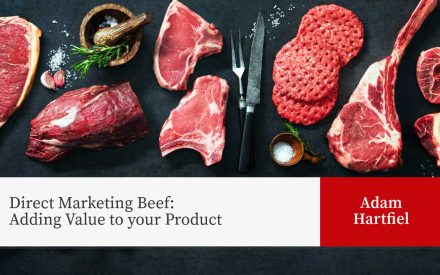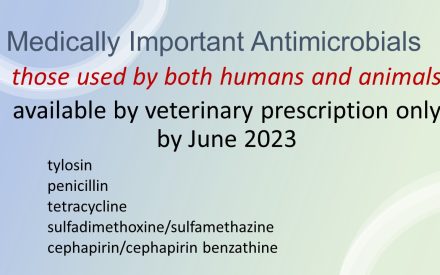What are Nitrates and Nitrites?
Nitrates and nitrites are short names for “sodium nitrate” and “sodium nitrite” which are forms of salt. Salt (sodium chloride) has been used for thousands of years to preserve meat well before the discovery of refrigeration. Several centuries ago, nitrate and nitrite salts were found in salt by accident and it was soon realized these closely related ingredients helped extend the shelf life (aka. preserve) of meat by preventing rancidity and by also controlling the growth of bacteria. Today, purified nitrate and nitrite are commercially manufactured for many uses from fertilizer to a variety of foods such as cured meats and toothpaste. With a vast amount of research focused to learn more about these two unique salts, several discoveries were made:
- Nitrite salt is responsible for very effectively improving meat quality and safety;
- Nitrate salt is inert and must be first converted by bacteria to the form nitrite before it can be helpful for meat quality and safety;
- When added to meat at the allowed levels set forth by USDA, nitrite completely inhibits Clostridium botulinum growth, almost completely inhibits Clostridium perfringens, and slows the growth of many other pathogenic bacteria such as Listeria monocytogenes;
- Because biological reactions happen when added to meat products, nitrates and nitrites are classified as curing ingredients by USDA;
- Because nitrate and nitrite slow almost all bacteria that cause food spoilage and sickness, they are classified as preservatives by USDA.
Dietary Sources of Nitrates and Nitrites?
Much confusion has existed about where our oral intake of nitrate and nitrite actually comes from. There are three main sources of dietary nitrate and nitrite:
- Most of the nitrate and nitrite we consume is from the nitrate present in leafy vegetables. Nearly all vegetables contain nitrates (ranging from 0.001 to 1.0%) which accumulates in the plant from the uptake of nitrogen in the soil during the growing period. When consumed, a portion of the nitrate from vegetables is converted to nitrite by the bacteria found in our mouth. Other nitrate is swallowed and stored in our body until it is needed. Nearly 80% of the nitrate we consume is from vegetables.
- Most water contains a very small amount of nitrate and nitrite and depending on the amount you drink, it can be a major source (much more than from processed meats).
- Cured meat products also serve as a small source (~5% of our total intake) of nitrate and nitrite. Nearly all (~90%) of nitrate and nitrite added to cured meats is broken down and converted to other safe compounds. Levels of nitrate and nitrite present in cured meats at the time of store purchase are usually between 0.00002 and 0.004%.
Is it Safe to Consume Nitrate and Nitrite?
What we know about nitrate and nitrite:
- Both nitrate and nitrite are substances approved by FDA and USDA for use in foods.
- Levels of nitrate and nitrite used in meat products are carefully controlled by Federal laws and monitored by the USDA or state government officials.
- Pure nitrite, if consumed at levels of ~3-5 grams (equivalent to 6,000-10,000 servings of cured meat eaten at one sitting), can be very dangerous and even cause death because it binds to oxygen in your body stronger than the hemoglobinoxygen binding in your blood thus not allowing oxygen to reach several important organs.
- Decades of research have shown when nitrate and nitrite are carefully used following prescribed levels regulated by the USDA, these ingredients are completely safe and pose no human health risks whatsoever.
- Extensive and universally accepted academic research has shown, if careful control of use is not followed, a slight human health risk could exist. For example, if high levels of nitrite exist in foods that are high in protein and are exposed to high temperature (>300°F) cooking, such as bacon frying, very small amounts (parts per billion) of nitrosamines (compounds classified as a carcinogen) could be formed. As a result, bacon curing is carefully controlled (a lower level of nitrite is required, an ingredient (Vitamin C) is added to further reduce any remaining nitrite after product manufacture, and nitrate addition is prohibited so a potential source of additional nitrite isn’t available for nitrosamine reactions).
- Recent medical research has shown nitrite is critical for maintaining human health by controlling blood pressure, preventing memory loss, and accelerating wound healing. Medical research has also shown that both nitrite and nitrate are continuously being synthesized in our bodies from the amino acid arginine to meet the physiological demands are body needs to maintain homeostasis (good health). This means our bodies actually make our own nitrate and nitrite!
What about Meat Products without Nitrates or Nitrites?
An overabundance of retail meat product options exist in supermarkets today. “Traditional”, “Natural”, and “Organic” are three labeling categories of meat products commonly found yet can provide quite a bit of confusion.
Traditional meat products are those that follow normal labeling standards for any given product classification and description outlined by prescribed labeling requirements published by USDA. Many traditional meat products are required to contain curing ingredients (nitrate and/or nitrite) with strict usage requirements (eg. bacon) or to meet consumer expectations (eg. hams, hot dogs, etc.). Some products are not required in include curing ingredients at all but instead are added by the manufacture by choice (eg. turkey breast). USDA regulations explain when nitrate/nitrite is required, allowed, or prohibited.
Uncured meat products are those that do not contain nitrate or nitrite. Within this category, you can find meat products in stores with the word “uncured” printed on the product label. This describes products traditionally required or expected to contain curing ingredients but allowed to be made without nitrate and nitrite as long as the word “uncured” is added to the package label.
Natural meat products are those manufactured under stricter rules than traditional products which require minimal processing and also do not allow any added artificial coloring, flavoring, or preservatives. Because nitrate and nitrite used for traditional products are made by purification, they are not allowed.
Organic meat products must follow standards established by the National Organic Program and governed by the USDA Organic Foods Production Act regarding practices and substances that may be used for production, processing, and handling of organic foods. Both purified nitrate and nitrite are listed as prohibited ingredients and as such may not be used.
What are “Natural” Nitrates and Nitrites?
Because nitrates and nitrites are considered so important for safety, quality, and health by so many people (the government, scientists, manufactures, and many others), natural sources of these ingredients have been explored, identified, and successfully used to replace purified nitrate and nitrite. Vegetables high in naturally accumulating nitrate and nitrite (such as celery) are now commonly used to cure meat products with a natural, plant-based source for curing. Interesting, there is no difference between purified or plant based nitrate or nitrite. They are the exact same molecules…just from a different source.
Unfortunately, because USDA labeling rules do not yet exist for products cured using plant-based nitrate and nitrite, they are required to be labeled “uncured”. As one would expect, it can be quite confusing to find some products that are labeled “uncured” yet having cured properties such as a pink color. Updated labeling is being planned by USDA to clarify this unfortunate confusion. How can you tell if a meat product is cured using a purified or a natural source? If cured with a purified source, you will seed the words “sodium nitrite” on the label. If cured with a natural source, you will see the words “celery powder” or other similar vegetable ingredients on the label instead.

 Bird Breakdown: Exploring Yields and Cuts of Poultry
Bird Breakdown: Exploring Yields and Cuts of Poultry Importance of Forage Growth Stages When Grazing Cattle
Importance of Forage Growth Stages When Grazing Cattle Direct Marketing Beef: Adding Value to your Product
Direct Marketing Beef: Adding Value to your Product  Are you ready? Antibiotics for livestock will be prescription only in 2023
Are you ready? Antibiotics for livestock will be prescription only in 2023


